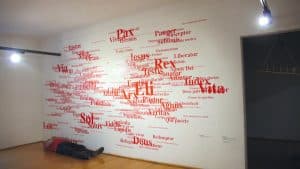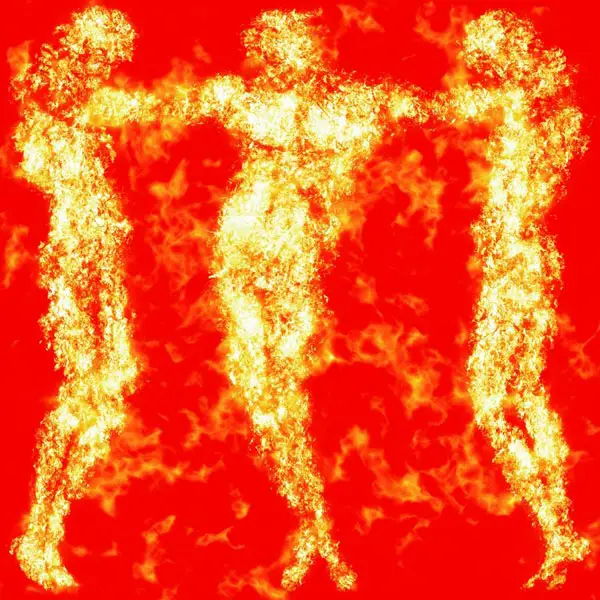Gor Chahal was born in 1961 in Moscow to a Muscovite mother and an Armenian father. One of three children and the brother of athlete Sanasar Oganesyan, his early life was less than artistic, and in fact the only artistic education he received was between the ages of 11 to 15 when he studied drawing in the studio of Tatiana Kiparisova. In 1985, he graduated with distinction from the Moscow Physical Engineering Institute with a degree in applied mathematics, and seemed destined to become an architect had fate not intervened and steered him in an alternate direction. In the same year as his graduation, he, along with poet Arcady Semenov and the rock group Polite Refusal created a group known as Parallel Actions, which combined rock music with poetry performances.
In the early 2000s after several decades of varied artistic work, Chahal turned his attention to modern Christian art and the dialogue that can be born of interaction between contemporary secular art and spiritual pieces. It was also at this time that he began to embark on a type of spiritual quest. He stresses the need to recognize his most recent pieces as specifically Christian in nature, and not merely religious. Futhermore, he firmly believes that there is no type of un-Christian art in Europe, and sees himself as facilitating a dialogue between secular and spiritual society.
Although Chahal had very little in the way of formal artistic training, this has not proven to be a hindrance to his artistic expression, and it can be said that one of the main influences on his work is perhaps his engineering education. While he does not seek inspiration from technology, it has proven instrumental in determining what mediums he employs. His works are not limited to one medium alone, and he uses elements of photography and videography, although he considers himself to be an artist before a photographer. His photography, however, is quite complex, employing multiple shooting techniques and digital processing, and he often models for his own work.
He has begun to define himself as a “multimedia artist,” a term which has only recently appeared on the contemporary arts scene. As a result of his background in engineering, he does not shy away from whatever can best convey his artistic intent, be it scanners, photography or computers. Throughout his artistic career, he has also explored numerous other mediums, including poetry – he has published one book of poems – modern Theater, performance art, and synthetic art forms. As early as 1989, he was working with virtual performance and in 1994 he began work with virtual sculpture. Perhaps it is this quality of not being bound to a single medium that has driven some to call him a visionary; and indeed, it is the message, and not the medium, that is most important to Chahal. His art is the product of a unique combination of intuition, high technology and scientific knowledge derived from his engineering degree.
The theme that dominates Chahal’s post-2000 work is that of religion in art, and he seeks to open up and facilitate a dialogue between the Christian church and the contemporary art world, perhaps because he believes that secular society and art have arrived at a deadlock. However, not everyone has welcomed his message. He strives to “develop the concept of beauty as harmony between esthetics and ethics,” and his piece, “The Sun of Truth, Goodness and Beauty” can be interpreted as a long reflection on the current crises facing humanity and society. Such reflection has led Chahal to the belief that there is a real, distinct need for a revival of the role of the church and Christianity in contemporary Russian society. Chahal’s work has not always been grounded in religion; in fact in 1985 he collaborated with the “World Champions” in the creation of what they termed “unreflective art”. His interest in art extends into the philosophical, and in 2007, he proved a hypothesis on the influence of the transphysical character of fine art on the noosphere, a space which is defined as “the sphere of human consciousness and mental activity especially in regard to its influence on the biosphere and in relation to evolution.” In 2009, he realized the principal of reverse perspective in photography, a technique used in traditional Russian Orthodox iconography where, the larger an object appears, the further away from the viewer it is.

Chahal’s most recent works, that is, those inspired by Christianity, have received a great deal of attention from both secular and religious communities within Russia and abroad. His work is displayed in public and private collections in Russia, Austria, the Netherlands, Italy, Germany, Japan, the USA, and Egypt. Both the Church of the Martyr Tatyana at Moscow State University and the secular Tretyakov Gallery have played host to Chahal’s works, and already, Chahal’s vision of opening a dialogue between the secular and spiritual worlds has come to pass.
The university church hosted an exhibition “of work that visitors of avant-garde galleries, not churches are accustomed to, entitled “Dvoeslovie/Dialog” (“dvoeslovie” being Old Church Slavonic for “dialogue”.) According to Father Maxim of the Church of the Martyr Tatyana, this has opened “a dialogue between the Church and society, between representatives of spiritual and secular views, between the intelligentsia of the church and secular intelligentsia” all the while “respecting Orthodox traditions.” Although it was initially difficult to predict the reactions of visitors to the installation at Moscow State University, and it was feared that the exhibit would be unpopular, the exhibit had quite the opposite effect. The majority of visitors and churchgoers praised it. Other church leaders have praised Chahal’s work displayed elsewhere, such as his installation “The Names of God” at Moscow’s Tretyakov Gallery. In an arts scene that can potentially harbour a great deal of confrontation, violence and aggression are notably absent from Chahal’s work. It is hoped that his work will attract attention, and with it a number of viewers who can leave with a greater understanding of the issues being discussed and portrayed.
However, his work has not been viewed so positively by all. In 2005, a group of nine artists brought a law suit for damages totalling the equivalent of $175,000 against a second group of artists, of which Chahal was a part. They claimed the exhibition “Russia 2” caused them “moral injury” and made a mockery of Russian Orthodoxy. The exhibition was designed as a reaction to the actions of the Russian State – referred to as “Russia 1” – and was particularly critical of then-president, Vladimir Putin, the Kremlin, and most significantly, the Russian Orthodox Church. In a notable and perhaps surprising victory for Chahal’s group, the courts dropped the case, citing the separating of church and state. As the show’s organizer, Marat Guelman, noted, “It is the first victory for art.”
Perhaps it is slightly ironic that the future of a branch of contemporary Russian art lies with the work of a man who looks backwards to Russia’s traditional religious path and whose work is influenced not by a lengthy artistic education, but by his mathematics degree. Chahal’s work not only creates and facilitates an artistic dialogue between the secular and spiritual worlds, but serves to peacefully open up thought-provoking dialogues between different sections of Russian society. With a subject that can be so controversial and divisive, it seems as if Chahal’s work generally has the opposite effect, and is in fact uniting two incredibly different sections of society.
Source Material From:
Gor Chahal at CHA, Merriam-Webster Online Dictionary: Noosphere, Pharosart.org – Gor Chahal, Дневник Гора Чахала
“Moscow Show Pits Art Against Church and State” in The New York Times, November 26, 2005
“Arts; Briefly: Suit Against Russian Art is Dismissed” in The New York Times, February 4, 2006
Двоесловие: Актуальные Художники в Храме
Еркрамас – Искусство Гор Чахал, “от Христанства не уйти”
Открытая Галерия – Open Gallery, Gor Chahal
Отличить Непривычнуп Формуот Коробящего Содержания – Taday.ru







